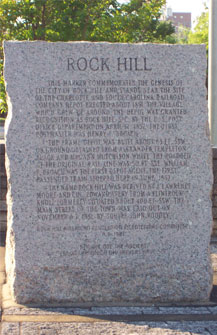
Growth
In 1961, Rock Hill Industrial Park opened on 247 acres straddling the railroad north of bypass 21. New stores and shopping malls opened up around town away from downtown Rock Hill, and began to contribute to downtown’s decline. Teachers and parents demanded a change to integrate schools in Rock Hill. The school bard recommended integration in public schools and was voted and approved by 80% of Rock Hill’s citizens.
Mayor David Lyle approved many changes in Rock Hill during his term in office. Concerning downtown, he relocated the railroad tracks and built overpasses for Oakland Avenue and Charlotte Avenue, extended Trade Street, and enclosed two blocks of Main Street under one roof creating an indoor mall. Work began in 1972. The Southern Railroad tracks were moved 100 feet to the east, switchyards at White Street were moved to Willowbrook Street, two railroad bridges were built, and underpasses were dug out at Black and Johnson Streets. Trade Street was realigned east of the tracks and made to be four lanes. Most of the buildings in the Black Street area from Wilson to Trade Streets were demolished. The existing train depot built in 1903 was also demolished.
I-77 was built between Charlotte and Rock Hill in the 1970’s.
After completion, shops, businesses and hotels began to bloom between Rock Hill
and Fort Mill.